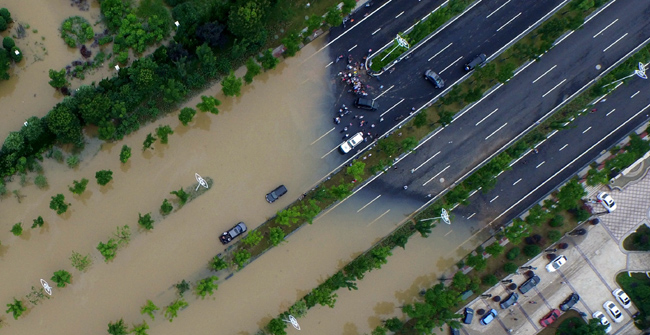Little Pluto bigger than scientists thought as flyby looms
Updated: 2015-07-14 20:57
(Agencies)
|
|||||||||||
|
 |
|
Pluto is pictured in this July 7, 2015 handout image from New Horizons Long Range Reconnaissance Imager (LORRI). [Photo/Agencies] |
As for pictures, the resolution is going to increase dramatically. Until New Horizons, the best pictures of Pluto had come from the Hubble Space Telescope. Hubble did its best from Earth orbit, but managed to produce only crude pixelated blobs of the minuscule world.
The New Horizons spacecraft is the size of a baby grand piano with a salad bowl - the dish antenna - on top. It will come closest to Pluto at 7:49 am EDT (1149 GMT) Tuesday. Thirteen hours later, around 9 pm EDT (0100 GMT), flight controllers will learn if everything went well. The spacecraft will have sent the confirmation signal 4 hours earlier; that's the one-way, speed-of-light, data-transit time between New Horizons and Earth.
Stern expects "a little bit of drama" during closest approach, when the spacecraft is out of touch with ground controllers. New Horizons cannot make observations and send back data at the same time, so scientists opted for maximum science during those most critical hours.
Pluto is the largest object in the so-called Kuiper Belt, considered the third zone of the solar system after the inner rocky planets and outer gaseous ones. This unknown territory is a shooting gallery of comets and other small bodies; every time one of these wayward objects smack one of Pluto's five known moons, the ejected material ends up in orbit around Pluto, thus the debris concern. An extension of the $720 million mission, not yet approved, could have New Horizons flying past another much smaller Kuiper Belt object, before departing the solar system.
Today's Top News
Greek parliament approves debt deal and first reforms
Former Auschwitz bookkeeper, 94, sentenced to four years in prison
Chinese cult leader faces criminal prosecution
Internet giants reprimanded over obscene clip
China posts 7% GDP growth rate in Q2
Greek PM defends choice of harsh debt deal rather than Grexit
Three-day forum in Zhanjiang to launch 'online Silk Road'
UK restricts students' right to work
Hot Topics
Lunar probe , China growth forecasts, Emission rules get tougher, China seen through 'colored lens', International board,
Editor's Picks

|

|

|

|

|

|






